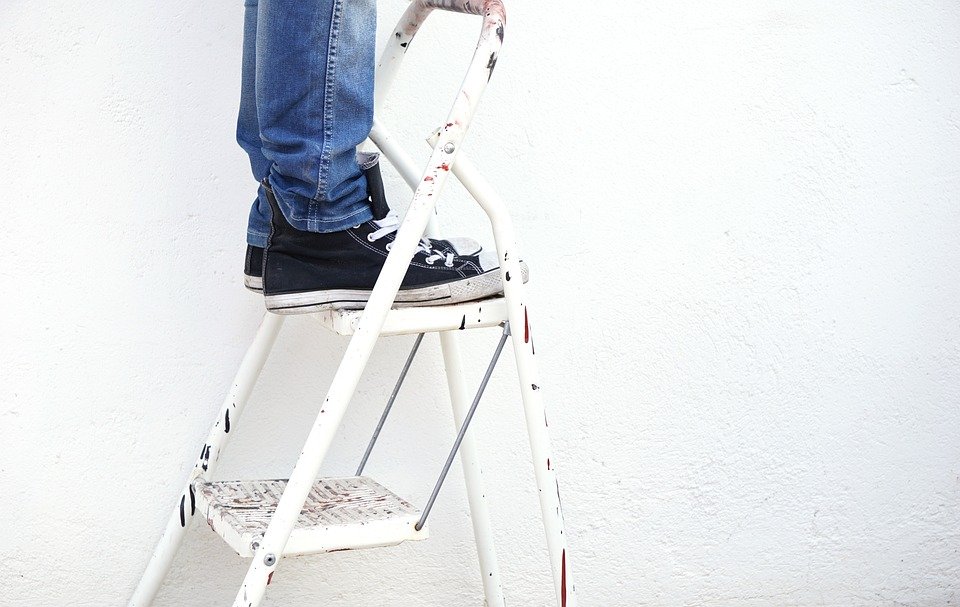**Gyeongju Historic Areas: Preserving the Cultural Legacy of Gyeongsangbuk-do**
Gyeongju Historic Areas (慶州), located in Gyeongsangbuk-do, South Korea, is a treasure trove of cultural heritage and historical significance. As one of the most well-preserved ancient cities in Korea, it offers visitors a unique opportunity to delve into the rich past of this fascinating region. In this article, we will explore the various historic areas within Gyeongju and discover why they are an essential part of South Korea’s cultural legacy.
**1. Daereungwon Tomb Complex: Unearth the Secrets of Ancient Royalty**
Located in the heart of Gyeongju, the Daereungwon Tomb Complex is a must-visit destination for history enthusiasts. This sprawling area is home to numerous royal tombs dating back to the Silla Dynasty, which ruled over Korea from 57 BC to 935 AD. As you wander through the complex, you’ll encounter large earthen mounds, known as tumuli, which house the remains of ancient kings and nobles. The highlight of the complex is the Cheonmachong Tomb, where you can witness the exquisite artifacts and treasures unearthed from these sacred burial sites.
Detailed Address: Daereungwon-ro, Gyeongju, Gyeongsangbuk-do, South Korea
Transportation Options: Take a taxi from Gyeongju Station, or hop on bus number 11, 700, or 10-1.
Transportation Costs: Taxi fare approximately 4,000 KRW, bus fare around 1,300 KRW.
Entrance Fee: 2,000 KRW for adults, 1,000 KRW for students.
**2. Bulguksa Temple: A Spiritual Oasis Amidst Ancient Architecture**
Nestled on the slopes of Mount Toham, Bulguksa Temple stands as a testament to the exquisite craftsmanship of the Silla Dynasty. This UNESCO World Heritage site is renowned for its beautiful gates, stone pagodas, and intricately carved sculptures. As you explore the temple complex, you’ll feel a sense of peace and tranquility wash over you. Don’t miss the famous Seokguram Grotto, an artificial cave housing a serene Buddha statue, which symbolizes the ultimate state of enlightenment.
Detailed Address: 15, Bulguk-ro, Gyeongju, Gyeongsangbuk-do, South Korea
Transportation Options: Take bus number 10, 11, or 700 from Gyeongju Station.
Transportation Costs: Bus fare approximately 1,300 KRW.
Entrance Fee: 5,000 KRW for adults, 4,000 KRW for teenagers, 3,000 KRW for children.
**3. Yangdong Folk Village: Step Back in Time to a Traditional Korean Village**
For a glimpse into the rural lifestyles of ancient Koreans, a visit to Yangdong Folk Village is a must. This well-preserved village, surrounded by picturesque mountains and rivers, showcases the architectural beauty and cultural heritage of the Joseon Dynasty. Wander through its narrow alleyways, lined with traditional wooden houses and peaceful gardens. Experience the traditional customs and traditions of the locals, and immerse yourself in the tranquil ambiance of this living museum.
Detailed Address: 36, Yangdong-gil, Gangdong-myeon, Gyeongju, Gyeongsangbuk-do, South Korea
Transportation Options: Take bus number 505 from Gyeongju Station.
Transportation Costs: Bus fare approximately 1,300 KRW.
Entrance Fee: 4,000 KRW for adults, 3,000 KRW for teenagers, 2,000 KRW for children.
**4. Gyeongju National Museum: Unraveling the Mysteries of the Past**
Housing an impressive collection of artifacts and archaeological treasures, the Gyeongju National Museum is a must-visit for history buffs. From exquisite jewelry and pottery to ancient weapons and artworks, the museum offers a comprehensive overview of the Silla Dynasty and its cultural legacy. Marvel at the intricate details of the famed Golden Silla Crown and gain a deeper understanding of Korea’s ancient history through the museum’s informative exhibitions.
Detailed Address: 186, Iljeong-ro, Gyeongju, Gyeongsangbuk-do, South Korea
Transportation Options: Take bus number 10, 11, or 700 from Gyeongju Station.
Transportation Costs: Bus fare approximately 1,300 KRW.
Entrance Fee: Free admission for the main exhibition, special exhibitions require an additional fee.
**5. Gyeongju Gyochon Traditional Village: A Glimpse of Traditional Korean Lifestyle**
Immerse yourself in the charm of traditional Korean architecture and culture at Gyeongju Gyochon Traditional Village. This well-preserved village offers a glimpse into the everyday lives of the locals, with its beautifully restored hanok houses, traditional workshops, and cultural performances. Wander through its narrow streets lined with quaint shops and sample mouthwatering local delicacies. Don’t forget to visit the Gyeongju Gyochon Hanbok Experience Center, where you can dress up in traditional Korean attire for a memorable photoshoot.
Detailed Address: 170, Bodeok-dong, Gyeongju, Gyeongsangbuk-do, South Korea
Transportation Options: Take bus number 11, 700, 10-1, or 50 from Gyeongju Station.
Transportation Costs: Bus fare approximately 1,300 KRW.
Entrance Fee: Entry to the village is free, certain activities may require an additional fee.
**FAQs**
Q: Are there any other historical sites in Gyeongju worth visiting?
A: Absolutely! Other notable historic areas in Gyeongju include the ancient Tumuli Park, Seokbinggo Ice House, and Anapji Pond.
Q: Can I explore Gyeongju Historic Areas on foot?
A: While some attractions are within walking distance of each other, it is recommended to utilize public transportation or taxi services due to the vastness of the area.
Q: Are there any nearby destinations I can visit after exploring Gyeongju?
A: Yes, you can consider visiting the nearby city of Busan, famous for its stunning beaches, vibrant markets, and delicious seafood.
《Japanese Translation》
**慶州歴史地域:慶尚北道の文化的遺産の保護**
韓国・慶尚北道に位置する慶州歴史地域(慶州)は、文化遺産と歴史的な意義に溢れる宝庫です。最も保存状態の良い古代都市の一つとして、この魅力的な地域の豊かな過去に深く突入する機会を訪れる人々に提供しています。この記事では、慶州内の様々な歴史地域を探索し、なぜこれらが韓国の文化的遺産の重要な部分であるのかを発見します。
**1. 大伶院古墳群:古代王族の秘密を探り尽くす**
慶州の中心部に位置する大伶院古墳群は、歴史愛好家には必見の場所です。この広大な区域には、紀元前57年から935年までの新羅王朝時代にさかのぼる多くの王族の墓があります。広大な区域を歩きながら、古代の王と貴族の遺体が眠る、大きな土の塚である古墳に遭遇します。この古墳群のハイライトは、文化財や宝物が展示された天馬塚です。
詳しい住所:大伶院路、慶州、慶尚北道、韓国
交通手段:慶州駅からタクシーで行くか、バス11番、700番、10-1番に乗る。
交通費:タクシー料金は約4,000ウォン、バス料金は約1,300ウォンです。
入場料:大人2,000ウォン、学生1,000ウォンです。
**2. 佛國寺:古代建築の中の精神性のオアシス**
土岩山の斜面に広がる佛國寺は、新羅王朝の素晴らしい職人技を物語る存在です。このユネスコ世界遺産は、美しい門、石碑、細かく彫刻された彫刻で有名です。寺院の敷地内を探索する間、平和と静寂を感じることができます。冥想の境地を表す静かな仏像が安置されている有名な石窟寺院、石窟庵を見逃さないでください。
詳しい住所:慶州、慶尚北道、佛國寺路15番地
交通手段:慶州駅からバス10番、11番、700番に乗る。
交通費:バス料金は約1,300ウォンです。
入場料:大人5,000ウォン、10代の若者4,000ウォン、子供3,000ウォンです。
**3. 梁洞民俗村:伝統的な韓国村落への一歩**
古代韓国の農村生活を垣間見るためには、梁洞民俗村への訪問が必須です。美しい山と川に囲まれたこの保存状態の良い村は、朝鮮王朝の建築美と文化遺産を展示しています。伝統的な木造家屋と静かな庭園が立ち並ぶ細い路地を歩きます。地元民の伝統的な習慣と伝統に触れ、この生きた博物館の静かな雰囲気に浸ってください。
詳しい住所:慶州、慶尚北道、江東面、梁洞街36番地
交通手段:慶州駅からバス505番に乗る。
交通費:バス料金は約1,300ウォンです。
入場料:大人4,000ウォン、10代の若者3,000ウォン、子供2,000ウォンです。
**4. 慶州国立博物館:過去のミステリーを解き明かす**
印象的な収蔵品と考古学的な宝物を所蔵する慶州国立博物館は、歴史愛好家にとって必見の場所です。美しい宝飾品や陶磁器、古代の武器や芸術品など、博物館は新羅王朝とその文化遺産に関する包括的な概観を提供しています。著名な金色の新羅冠の繊細なディテールに驚嘆し、博物館の展示を通じて韓国の古代史により深く理解を深めましょう。
詳しい住所:慶州、慶尚北道、一井路186番地
交通手段:慶州駅からバス10番、11番、700番に乗る。
交通費:バス料金は約1,300ウォンです。
入場料:メイン展示の入場は無料ですが、特別展示には別途料金が必要です。
**5. 慶州曲村:伝統的な韓国の生活スタイルの一瞥**
慶州曲村では、伝統的な韓国建築と文化の魅力に浸ることができます。保存状態の良いこの村には、美しい韓国伝統の木造家屋、伝統工房、文化イベントがあります。風光明媚な店が立ち並ぶ細い通りを散策し、美味しい地元の料理を試食してみてください。思い出に残る写真撮影のために、慶州曲村韓服体験センターも必ず訪れてみてください。
詳しい住所:慶州、慶尚北道、保徳洞170番地
交通手段:慶州駅からバス11番、700番、10-1番、50番に乗る。
交通費:バス料金は約1,300ウォンです。
入場料:村への入場は無料ですが、一部のアクティビティには別途料金が必要な場合があります。
**FAQ(よくある質問)**
Q: 慶州で他に訪れる価値のある歴史地域はありますか?
A: もちろんです!慶州には、他にも古代の埋葬地である古墳公園、石氷庫、アナプジ池など、訪れる価値のある歴史地域があります。
Q: 慶州歴史地域を徒歩で探索できますか?
A: 距離によっては徒歩でも探索できますが、広範な地域のため、公共交通機関やタクシーサービスを利用することをお勧めします。
Q: 慶州を探索した後、近くの他の場所を訪れることはできますか?
A: はい、慶州周辺のビーチや活気のある市場、美味しいシーフードで有名な釜山を訪れることがで



